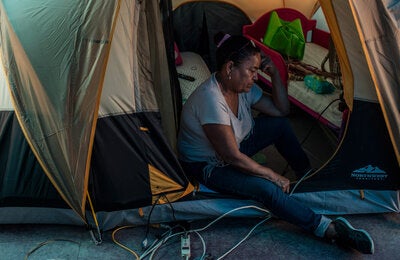
To continue effective combat against the mosquitoes that carry Zika, dengue and Chikungunya viruses, experts from the Pan American Health Organization and the Oswaldo Cruz Foundation in Brazil have trained entomologists from 11 countries in current techniques to monitor and manage insecticide resistance in Aedes aegypti mosquitoes.
Washington, July 11, 2016 (PAHO/WHO)—To continue effective combat against the mosquitoes that carry Zika, dengue and Chikungunya viruses, experts from the Pan American Health Organization and the Oswaldo Cruz Foundation in Brazil have trained entomologists from 11 countries in current techniques to monitor and manage insecticide resistance in Aedes aegypti mosquitoes.
Entomologists from the ministries of health of Brazil, Bolivia, Colombia, Dominican Republic, Ecuador, El Salvador, Guatemala, Honduras, Nicaragua, Peru and Uruguay underwent the first round of training at the Oswaldo Cruz Institute and the IBEX Army Biology Institute in Rio de Janeiro last week. Additional training for other countries, along with development of laboratory networks, is planned, according to PAHO officials.

"The use of safe, effective insecticides against adult mosquitoes and larvae, is crucial to interrupt transmission of Zika virus, as well as other viruses transmitted by Aedes aegypti mosquitoes such as chikungunya and dengue. Insecticide resistance monitoring in field populations of Aedes spp is required to determine the levels, mechanisms and geographical distribution of resistance in order to select appropriate insecticides for vector control. Evidence-based decisions will ensure that effective insecticides are selected and used," according to a WHO document used in the training sessions.
Insecticides are used as a rapid intervention to interrupt disease transmission, particularly during outbreaks of mosquito-borne disease. The WHO guide notes, "Few insecticide active ingredients are available for public health use, and to minimize the impact of insecticide resistance in a control program, appropriate decisions need to be made. Usually, the first option to be selected by a control program is the least expensive insecticide with highest effectiveness against the vector populations, which also has a low-risk to applicators and bystanders. Development of insecticide resistance drives a change to more expensive options, compromising coverage."
The participants also used a tool from the Centers for Disease Control and Prevention (CDC), a bottle bioassay described as "a surveillance tool for detecting resistance to insecticides in vector populations. It is designed to help determine if a particular formulation of an insecticide is able to control a vector at a specific location at a given time. This information, combined with results of bioassays using synergists and those of biochemical and molecular assays, can assist in determining which insecticide should be used if resistance is detected."
LINKS:
—Questions and Answers on vector control for Zika
—PAHO/Zika: www.paho.org/Zikavirus



